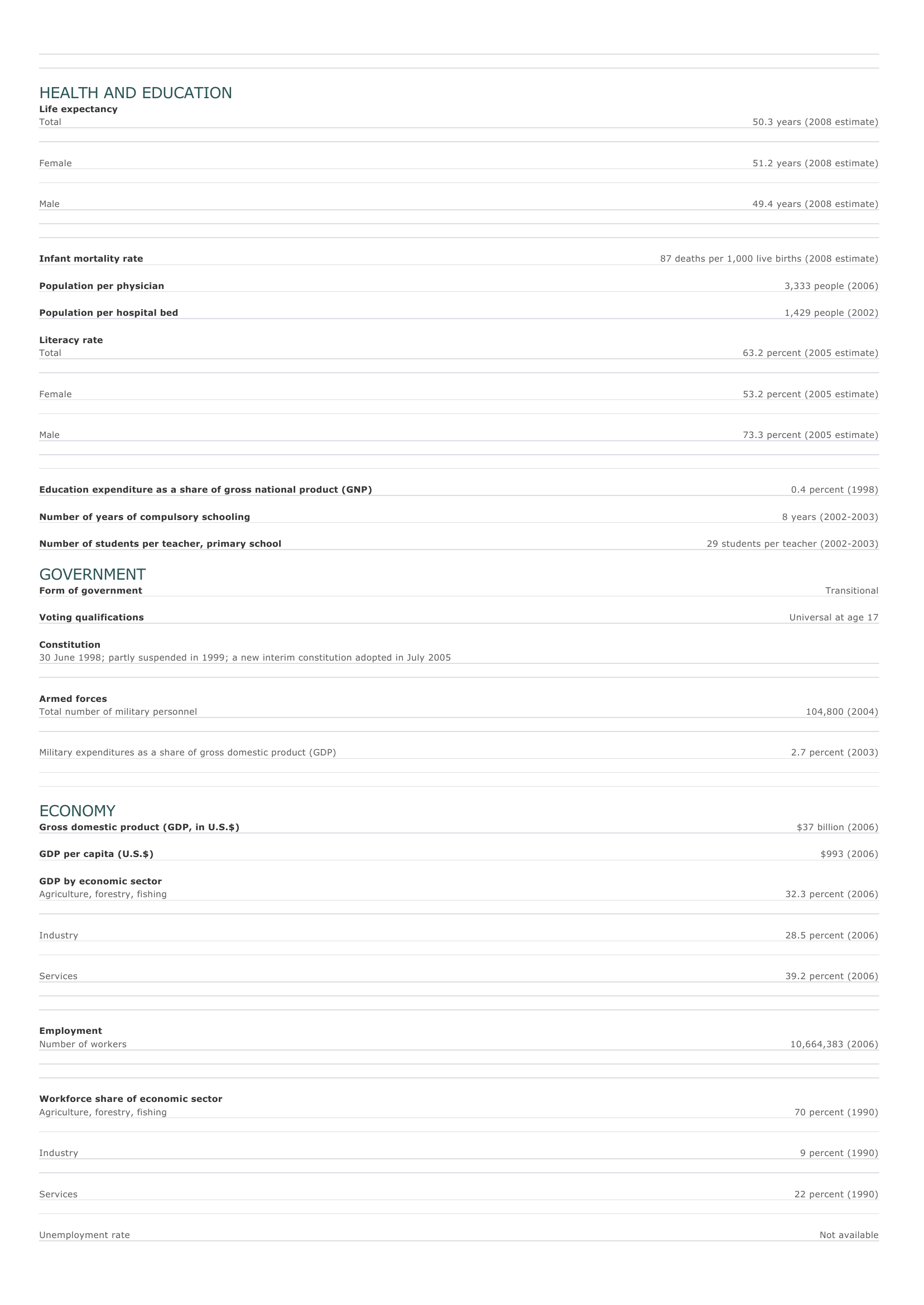Sudan Facts and Figures. BASIC FACTS Official name Capital Area Republic of the Sudan Khartoum 2,505,800 sq km 967,490 sq mi PEOPLE Population 40,218,455 (2008 estimate) Population growth Population growth rate 2.13 percent (2008 estimate) Projected population in 2025 57,461,705 (2025 estimate) Projected population in 2050 88,227,761 (2050 estimate) Population density 17 persons per sq km (2008 estimate) 44 persons per sq mi (2008 estimate) Urban/rural distribution Share urban 41 percent (2005 estimate) Share rural 59 percent (2005 estimate) Largest cities, with population Khartoum 4,286,000 (2003 estimate) Omdurman 2,810,000 (2007 estimate) Port Sudan 305,385 (1993) Kassal ? 234,270 (1993) Nyala 228,778 (1993) Ethnic groups Black African (Dinka, Nuer, Shilluk, Azande, Kakwa) 49 percent Arab 39 percent Nubian 8 percent Beja 3 percent O ther 1 percent Languages Arabic (official), Nubian, Dinka, Nuer, Bari, Lotuko, English Religious affiliations Sunni Muslim (in the north) 70 percent Ethnoreligionist or Indigenous beliefs 12 percent Christian (mostly in the south and Khartoum) 15 percent O ther 3 percent HEALTH AND EDUCATION Life expectancy Total 50.3 years (2008 estimate) Female 51.2 years (2008 estimate) Male 49.4 years (2008 estimate) Infant mortality rate 87 deaths per 1,000 live births (2008 estimate) Population per physician 3,333 people (2006) Population per hospital bed 1,429 people (2002) Literacy rate Total 63.2 percent (2005 estimate) Female 53.2 percent (2005 estimate) Male 73.3 percent (2005 estimate) Education expenditure as a share of gross national product (GNP) Number of years of compulsory schooling Number of students per teacher, primary school 0.4 percent (1998) 8 years (2002-2003) 29 students per teacher (2002-2003) GOVERNMENT Form of government Transitional Voting qualifications Universal at age 17 Constitution 30 June 1998; partly suspended in 1999; a new interim constitution adopted in July 2005 Armed forces Total number of military personnel Military expenditures as a share of gross domestic product (GDP) 104,800 (2004) 2.7 percent (2003) ECONOMY Gross domestic product (GDP, in U.S.$) GDP per capita (U.S.$) $37 billion (2006) $993 (2006) GDP by economic sector Agriculture, forestry, fishing 32.3 percent (2006) I ndustry 28.5 percent (2006) Services 39.2 percent (2006) Employment Number of workers Workforce share of economic sector Agriculture, forestry, fishing 10,664,383 (2006) 70 percent (1990) I ndustry 9 percent (1990) Services 22 percent (1990) Unemployment rate Not available National budget (U.S.$) Total revenue $811 million (1999) Total expenditure $854 million (1999) Monetary unit 1 Sudanese pound, consisting of 100 piastres Major trade partners for exports China, Japan, South Korea, France, and Saudi Arabia Major trade partners for imports China, Saudi Arabia, Germany, United Kingdom, and France ENERGY, COMMUNICATIONS, AND TRANSPORTATION Electricity production Electricity from thermal sources 58.10 percent (2003 estimate) Electricity from hydroelectric sources 41.90 percent (2003 estimate) Electricity from nuclear sources 0 percent (2003 estimate) Electricity from geothermal, solar, and wind sources 0 percent (2003 estimate) Number of radios per 1,000 people 406 (2000 estimate) Number of telephones per 1,000 people 19 (2005) Number of televisions per 1,000 people 239 (2000 estimate) Number of Internet hosts per 10,000 people 0 (1999) Daily newspaper circulation per 1,000 people 27 (1996) Number of motor vehicles per 1,000 people 12 (1997) Paved road as a share of total roads 36 percent (1999) SOURCES Basic Facts and People sections Area data are from the statistical bureaus of individual countries. Population, population growth rate, and population projections are from the United States Census Bureau, International Programs Center, International Data Base (IDB) (www.census.gov). Urban and rural population data are from the Food and Agriculture Organization (FAO) of the United Nations (UN), FAOSTAT database (www.fao.org). Largest cities population data and political divisions data are from the statistical bureaus of individual countries. Ethnic divisions and religion data are largely from the latest Central Intelligence Agency (CIA) World Factbook and from various country censuses and reports. Language data are largely from the Ethnologue, Languages of the World, Summer Institute of Linguistics International (www.sil.org). Health and Education section Life expectancy and infant mortality data are from the United States Census Bureau, International Programs Center, International database (IDB) (www.census.gov). Population per physician and population per hospital bed data are from the World Health Organization (WHO) (www.who.int). Education data are from the United Nations Educational, Scientific and Cultural Organization (UNESCO) database (www.unesco.org). Government section Government, independence, legislature, constitution, highest court, and voting qualifications data are largely from various government Web sites, the latest Europa World Yearbook, and the latest Central Intelligence Agency (CIA) World Factbook. The armed forces data is from Military Balance. Economy section Gross domestic product (GDP), GDP per capita, GDP by economic sectors, employment, and national budget data are from the World Bank database (www.worldbank.org). Monetary unit, agriculture, mining, manufacturing, exports, imports, and major trade partner information is from the statistical bureaus of individual countries, latest Europa World Yearbook, and various United Nations and International Monetary Fund (IMF) publications. Energy, Communication, and Transportation section Electricity information is from the Energy Information Administration (EIA) database (www.eia.doe.gov). Radio, telephone, television, and newspaper information is from the United Nations Educational, Scientific and Cultural Organization (UNESCO) database (www.unesco.org). Internet hosts, motor vehicles, and road data are from the World Bank database (www.worldbank.org). Note Figures may not total 100 percent due to rounding. Microsoft ® Encarta ® 2009. © 1993-2008 Microsoft Corporation. All rights reserved.



